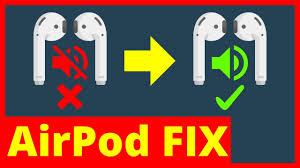
Air Pods have become synonymous with convenience and portability when it comes to listening to music or podcasts. But what happens when your favorite jams suddenly sound like a lullaby? It’s frustrating, to say the least. It can be difficult to figure out why is one Airpod louder than the other, but luckily, most of them are easily fixable.
Air Pod Love: Why We Choose Them
Before diving into the troubleshooting world, let’s appreciate why AirPods are so popular. They’re wireless, which means no more tangled wires interrupting your workout or commute. They’re compact and lightweight, slipping easily into your pocket and staying put in your ears. Plus, they seamlessly integrate with Apple devices, making connecting a breeze.
There are two main types of Air Pods: the classic AirPods (2nd generation) and AirPods Pro. The regular AirPods offer a comfortable, in-ear fit, while the Pros come with silicone tips that create a tighter seal and offer noise cancellation. Both deliver clear, crisp audio, but technical gremlins can sometimes affect that quality.
Why So Quiet? Diagnosing the Low Volume Blues
Now, onto the nitty-gritty. Here are the top culprits behind your low-volume AirPods:
Volume Check: This might seem obvious, but double-check the volume on both your device (phone, laptop, etc.) and your AirPods themselves (although AirPods don’t have physical volume controls).
Low Battery Blues: A weak battery can affect audio quality. Put your AirPods in the charging case and give them some juice.
Dirty Deeds: Earwax and debris can build up on the speaker mesh, dampening the sound. Use a dry cotton swab to gently clean the mesh (without sticking anything inside!).
App Settings Mischief: Some apps have their own volume controls. Make sure the volume is turned up within the app you’re using.
Low Power Mode: When your device is in low power mode, it might limit some functions, including audio output. Try turning it off and see if the volume improves.
Reduce Loud Sounds: This accessibility feature on iPhones can set a maximum volume limit. Check if it’s enabled and adjust it if needed.
EQ Settings Gone Rogue: Equalizer (EQ) settings can alter sound profiles. Try disabling any EQ settings you might have enabled on your device.
Forgotten Connection: Sometimes, a simple reconnection can work wonders. Forget your AirPods from your device’s Bluetooth settings and then re-pair them.
One AirPod Louder Than the Other?
This can be caused by an imbalance in the audio settings or debris build-up in one AirPod. Try the cleaning steps mentioned earlier and check your device’s accessibility settings for any balance adjustments (like Left/Right Balance under Audio/Visual).
Software Shenanigans: Outdated software on your AirPods or device can sometimes cause glitches. Make sure you have the latest updates installed.
The Final Note: Keeping Your AirPods Singing
By following these steps, you should be able to diagnose and fix the low-volume issue with your AirPods. If none of these solutions work, it might be time to contact Apple Support for further assistance.
Frequently Asked Questions
Can water damage cause low volume?
Yes, water damage can affect the internal components of your AirPods and lead to sound problems.
How often should I clean my AirPods?
It’s a good idea to clean your AirPods regularly, especially if you use them frequently. A quick wipe with a dry cloth after each use can help prevent earwax buildup.
Is there a way to boost the volume on AirPods?
While there’s no physical volume control on the AirPods themselves, turning up the volume on your device is the most straightforward way. Some recommend using an EQ setting called “Loudness” (if available on your device) to enhance the overall volume. However, be aware that this might affect sound quality.
Hopefully, this guide has helped you get your AirPods back to their full-volume glory. Now go forth and enjoy your music (or podcasts) at the perfect volume!